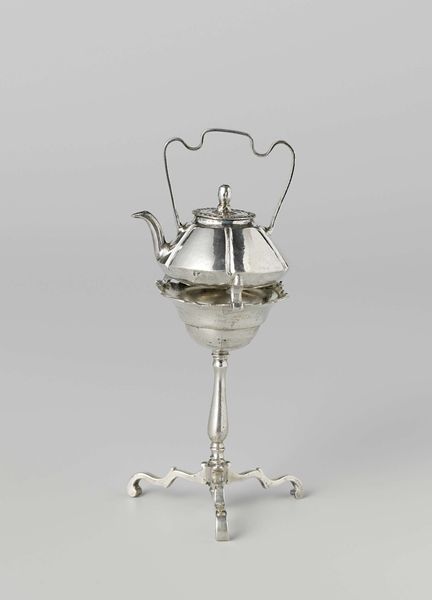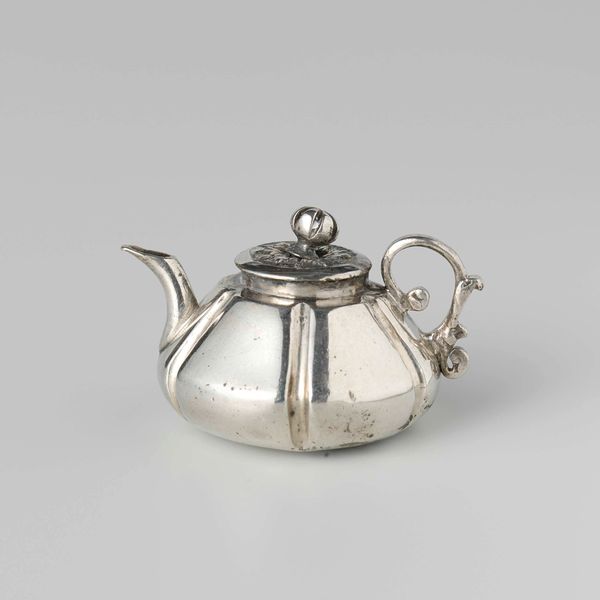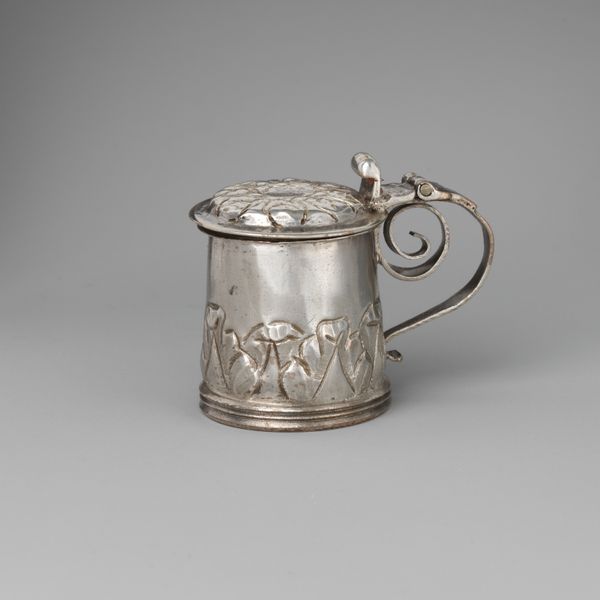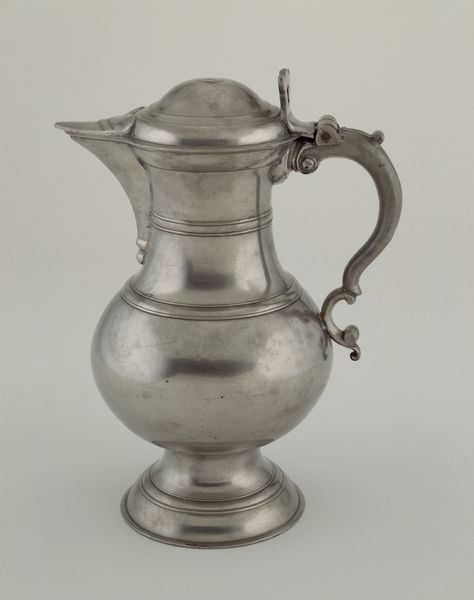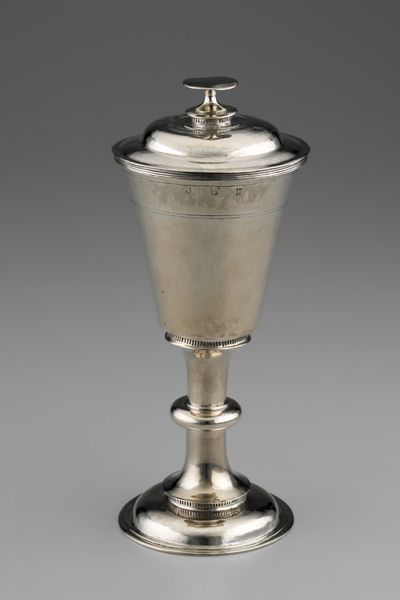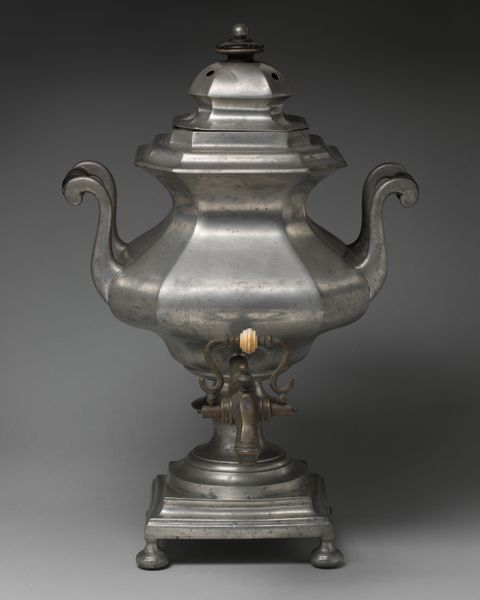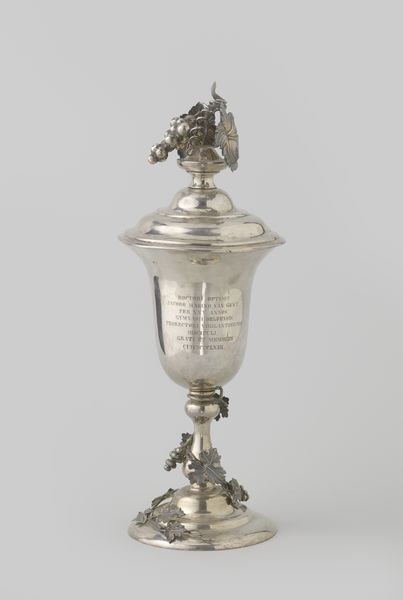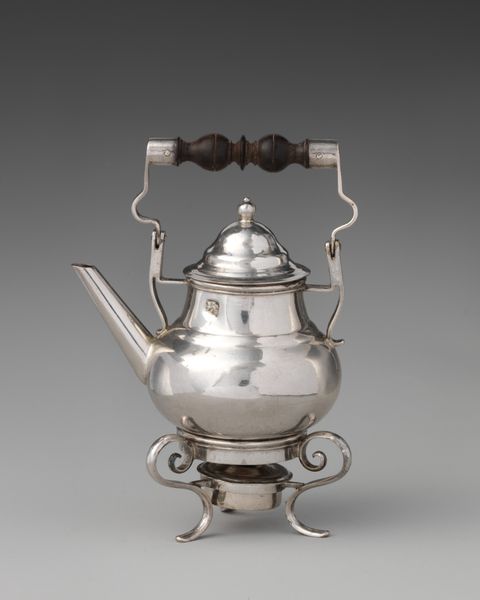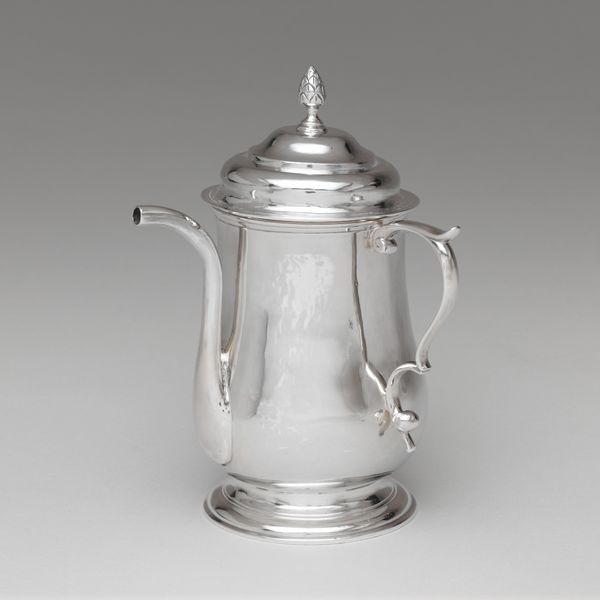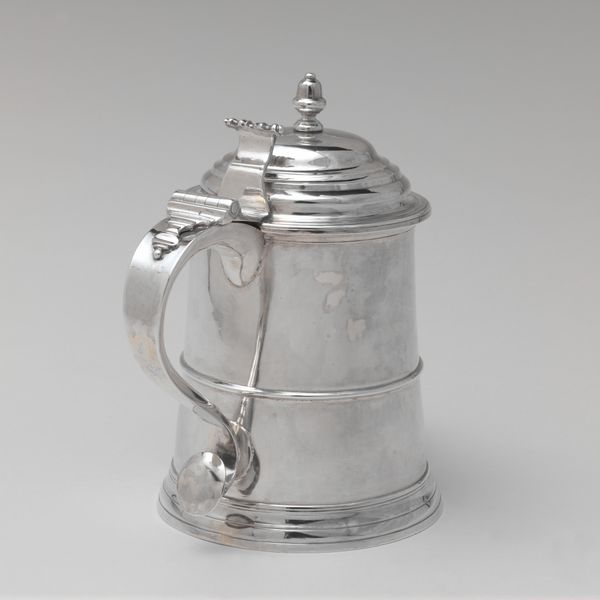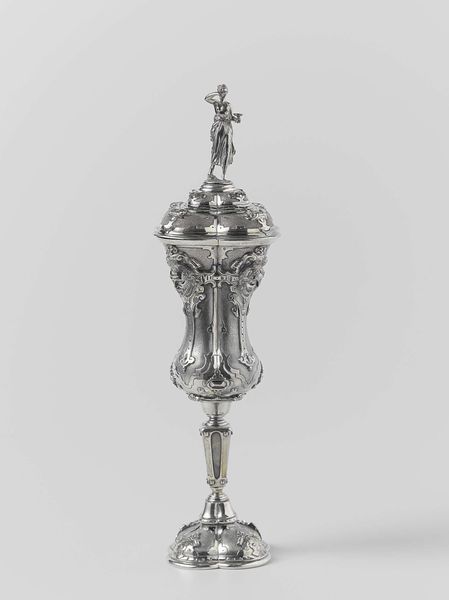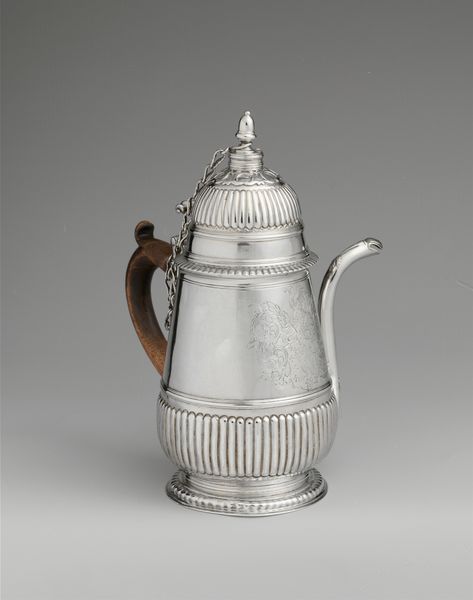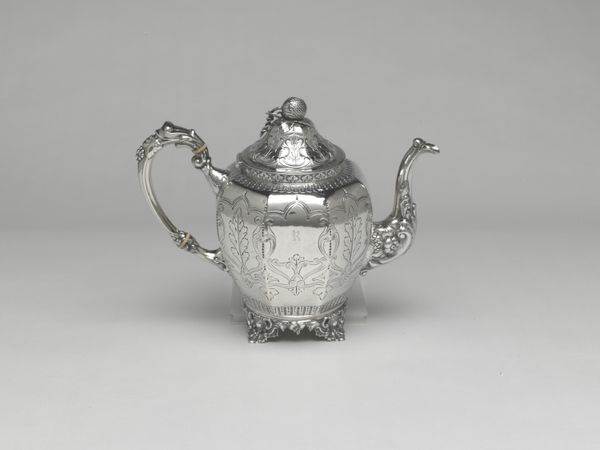
Copyright: Rijks Museum: Open Domain
Editor: We're looking at a "Kraantjeskan," a silver metal teapot crafted between 1776 and 1811 by Hendrik Duller. It feels incredibly ornate and…precarious, perched on those delicate legs. What story do you think it tells, looking at it? Curator: Oh, precarious is spot on! Like a debutante teetering on too-high heels! It whispers of rococo sensibilities – all playful elegance and fanciful ornamentation. But it also hints at something more grounded. Notice how the curves aren't just for show? They direct the eye, mimicking the flow of liquid it was made to pour. It is Dutch, though, so form follows function. The little flower on top? Utterly charming! Does that suggest any parallels to how people decorated at the time? Editor: I hadn't thought of that! Maybe it shows how much emphasis was placed on beauty in everyday objects. It also looks sort of top-heavy to me - do you think it pours well? Curator: Now that is the question isn't it? One imagines grand houses and careful, slow, and intentional motions, less about utility, and more about spectacle. I'd wager its purpose was, more so, to serve an impression and offer some theatrical elegance, perhaps as a centerpiece in an aristocratic salon. Now, picture that! Does that make you feel any different about this peculiar little teapot? Editor: Absolutely! Knowing that it's more about showmanship than, say, making a quick cuppa, changes everything. It's almost comical to think of someone using it practically. Curator: Precisely! Art's funny like that, isn’t it? Reveals itself when we stop taking it so seriously. That simple spout has more than a few tales. Editor: Thanks. That certainly gave me a fresh pour of perspective.
Comments
No comments
Be the first to comment and join the conversation on the ultimate creative platform.

